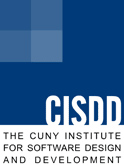Software: Applied Mathematics and Algorithms
Children's Progress, Inc. (CPI) administers online, dynamic assessment for young children in language arts and mathematics at public and independent schools across the country, including several cities in New York State. This project builds on CUNY Professor Elizabeth Sklar's work on simEd, an abstract, agent-based simulation of learning environments that includes a classroom" model representing students and teachers as "agents" and demonstrates patterns in student learning effected by various teacher behaviors. The project has two major goals: (1) to adapt the abstract simEd classroom model to data already collected by CPI, demonstrating the effectiveness of multiagent simulation as a means for visualizing and analyzing complex, multi-dimensional educational assessment data; and (2) to design and implement a prototype Simulation-based Environment for Analysis (SEA) that will enhance CPI's existing reporting mechanism.
(Funded by NSF-PFI, NYSTAR TTIP awarded-project)
CISDD has partnered with Gaia to design algorithms to balance the electrical power distribution in Gaia's battery based energy management system.
This optimization will focus on local needs and turn the fuel cell on/off or up/down based on short-term forecasted input from solar panel, local power needs, and battery state of charge. Based on the simulations using these algorithms, we will establish the best solutions that will give the most optimal generation source usage and the projected longest life for battery storage. This project has been awarded 2-year follow-on funding from NYSTAR.
Structured matrices such as Toeplitz, Hankel, Cauchy and Vandermonde matrices, are heavily used scientific and engineering computations and signal processing. The solution of a structured linear system of equations is among the most frequent operations in these areas. However the current approach to these algorithms has two deficiencies: inherent resistance to parallel acceleration and some numerical stability problems. To control these problems, one must use Residual Correction (RC) iterative methods. It is the goal of this project to extend experimental tests done in the CUNY Graduate Center and Lehman College with RC algorithms in order to yield a yield practical implementation for commercial use. The potential application of these algorithms is virtually unlimited, with initial commercialization contacts targeted to be in the engineering and computer markets.
This project involved the development and implementation of algorithms related to the problem of efficiently performing computations over finite fields, especially those with large characteristics. There exist techniques linking the factorization of cyclotomic polynomials to computing traces of roots of unity (Gauss Sums) over finite fields. Previous algorithms have been constructed to create solutions for each of these problems, given the solution of the other, by working in a quotient of a multivariate polynomial ring isomorphic to the Berlekamp subalgebra as well as various other algorithmic solutions developed for the project. Software was then developed to implement existing algorithms. The software generalizes the existing algorithms to work with arbitrary polynomials over arbitrary finite fields. The two programs were designed to assist in the investigation of a basic problem in mathematics; that of factoring cyclomatic polynomials over finite fields in a time polynomial, in the degree of the polynomial, and the logarithm of the characteristic of the field.
Quantitative text analysis is an idea with deep roots. Despite this, the majority of tools on the market are for qualitative text analysis. It is only recently that quantitative text analysis has begun to be developed. Contrary to the traditional qualitative text analysis, which aids the researcher in the researcher in identifying key themes by tagging them and compiling categories of code, quantitative analysis yields a unique insight into the structure of meaning in discourse and focuses on complex semiotic content. The first phase of this project will study a series of computerized coding algorithms to determine the relevant dimensions of variation and the optimal values for three kinds of complex semiotic content rhetoric, value structure and ideology. In the second phase a prototype user interface will be developed for the suite of coding algorithms. The eventual outcome of this project will yield a software tool for content coding at the semiotic level, rather than the lexical or syntactic levels, that is, oriented to quantitative analysis.
A numerical code based on Discrete Element Modeling (DEM) has been developed for computing the response of particulate materials such as unconsolidated granular materials, concentrated emulsions or fractured rocks. The systems under study in this project may be considered as "unconsolidated" aggregates of particulate materials which acquire stiffness as a result of the applied stress. The constitutive properties of such materials, which also include cohesionless soils, industrial powders, droplets, foams and colloidal suspensions, are determined mainly by interparticle contact properties such as friction and viscoelastic response. The project resulted in the development and testing of a numerical code for the two-dimensional case. The code is written in Fortran 90 and is ready to be ported to a parallel architecture.
>>Download Demo
Education - This is a contributing Drupal Theme
Design by
WeebPal.

